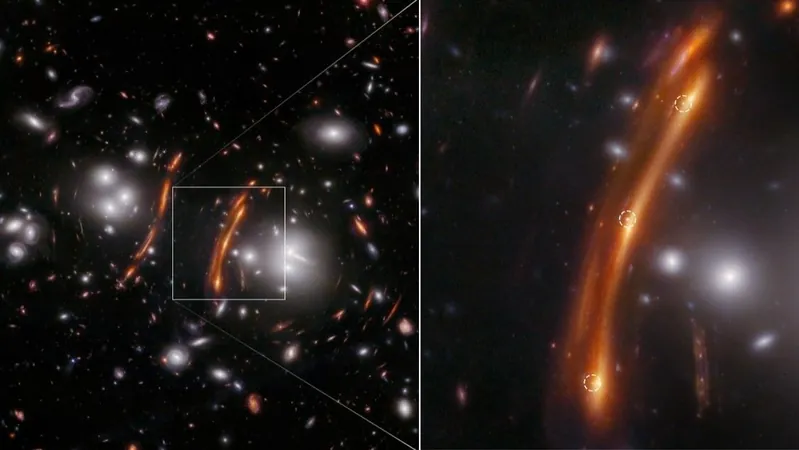
Massive Discovery! James Webb Telescope Uncovers Shocking Secrets About the Universe's Expansion
2024-10-02
Introduction
The James Webb Space Telescope (JWST) has made a groundbreaking discovery that raises significant questions about our current understanding of the universe. This revelation concerns the baffling issue known as "Hubble tension," highlighting the discrepancy in measurements of the cosmos's expansion rate.
Hubble Tension
Astronomers are increasingly troubled by how different regions of the universe appear to expand at varying rates. Specifically, measurements taken from the early universe align with our best cosmological model, while those closer to us undermine it. This paradox is at the heart of the ongoing debate within the scientific community.
Recent Studies
In a new set of studies published in *The Astrophysical Journal* and available on the pre-print site arXiv, researchers leveraged the gravitationally-warped light from a supernova located an astounding 10.2 billion light-years away. Their findings suggest that this conundrum may not have a swift resolution. Co-author Brenda Frye, an astronomy associate professor at the University of Arizona, stated, "Our team's results are impactful: The Hubble constant value matches other measurements in the local universe, and is somewhat in tension with values obtained when the universe was young."
Methods of Measuring the Hubble Constant
Currently, astronomers use two primary methods to determine the Hubble constant. The first examines tiny fluctuations in the cosmic microwave background radiation, a remnant of the universe's first light emitted just 380,000 years post-Big Bang. This approach yields an expansion rate of about 67 kilometers per second per megaparsec (km/s/Mpc), in line with standard cosmological predictions.
Conversely, the second method relies on measuring closer distances using Cepheid variable stars. This technique produces a considerably higher figure of 73.2 km/s/Mpc. Although the 6 km/s/Mpc difference may seem insignificant, it starkly contradicts the predictions of the standard model, suggesting that a conceptual breakthrough regarding dark energy—a mysterious force propelling the universe's expansion—may be needed.
JWST Observations
In the latest study, astronomers directed JWST's near-infrared camera (NIRCam) at the galaxy cluster PLCK G165.7+67.0, also known as G16, positioned 3.6 billion light-years from Earth. They observed three individual light points from a single Type Ia supernova, whose light had been magnified and distorted due to gravitational lensing caused by an intermediary galaxy.
Type Ia supernovae are significant because they occur when one star partners with a white dwarf—the remnant of a dead star. This interaction causes a colossal thermonuclear explosion, resulting in a consistent brightness that helps astronomers establish distances and refine the Hubble constant.
Findings and Implications
Later observations with ground-based telescopes, including the Multiple Mirror Telescope and the Large Binocular Telescope in Arizona, confirmed the origin of the light sources. By analyzing the time delays between the observed points and incorporating the supernova's distance into gravitational lensing models, the researchers arrived at a Hubble constant of 75.4 km/s/Mpc, with an uncertainty range of ±8.1, definitively contradicting the standard model of cosmology once more.
Conclusion
As the JWST continues its journey into the depths of space, each revelation adds another layer of complexity to our understanding of the cosmos. What will be unearthed next? Stay tuned as we anticipate more astonishing insights that may alter the course of cosmological science forever!



 Brasil (PT)
Brasil (PT)
 Canada (EN)
Canada (EN)
 Chile (ES)
Chile (ES)
 España (ES)
España (ES)
 France (FR)
France (FR)
 Hong Kong (EN)
Hong Kong (EN)
 Italia (IT)
Italia (IT)
 日本 (JA)
日本 (JA)
 Magyarország (HU)
Magyarország (HU)
 Norge (NO)
Norge (NO)
 Polska (PL)
Polska (PL)
 Schweiz (DE)
Schweiz (DE)
 Singapore (EN)
Singapore (EN)
 Sverige (SV)
Sverige (SV)
 Suomi (FI)
Suomi (FI)
 Türkiye (TR)
Türkiye (TR)